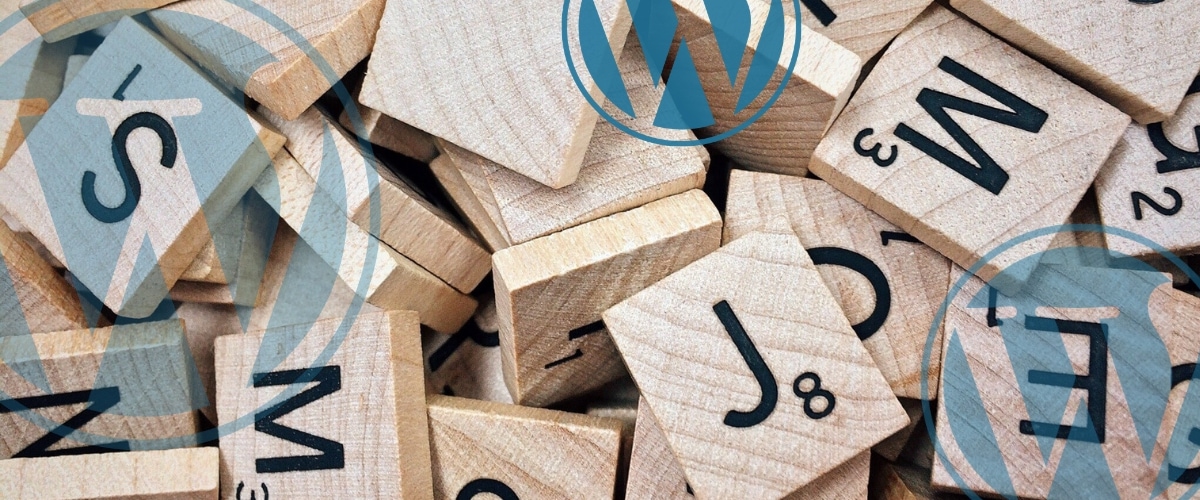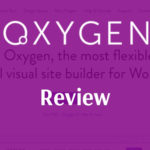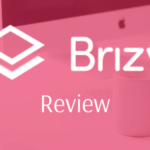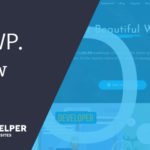When you are starting off in WordPress, it can be very hard to keep track of all the different terms you will need to learn. In this article we will discuss those vocabulary terms and go over what they mean.
So if you have ever wondered what a certain terms means in WordPress this is the article for you.
1. CMS
Content Management System is a word that stands for a system that allows you to create digital content. Most content management systems require someone to login to changes a design or layout.
2. Theme
WordPress uses a Theme to help the website look better without coding. Themes have a set group of CSS and styles which it uses to show a uniform design across all pages.
3. Plugins
WordPress uses plugins to add functionality to their websites. WordPress has a giant directory of plugins are in the thousands.
4. Widget
A widget is a snippet of code that has been added to the site that allows you to edit certain sections of the website without knowing any coding. These are often sections in sidebars and footers.
5. WYSIWYG
What You See Is What You Get is another term used for editing something that is user-friendly and allows you to directly see what you are editing. Often page builders have this functionality built in since things like Wix and Squarespace are forcing easier and easier editing. Often this requires little or no coding knowledge.
6. Page
WordPress divides things into categories of pages and posts. Pages are more timeless content is likely to stay static and not change. These are things like about pages, contact pages, service’s page or other pages that do not include content that is dated.
7. Post
A post space is a page that is often tied to things like a blog or some kind of communication channel which allows you to send out timely blog posts to customers. These are written by Authors of the website which posts the content in order to draw in readers to their blog.
8. User Roles
Due to the fact that WordPress us a fully realized website building software it has the ability to add or change roles of people who use it. The default user roles are admin, subscriber, author, editor, contributor. New user roles can be added using plugins or change the permissions of existing roles.
9. Permalinks
Permalinks describes how WordPress displays your content in the navigation bar. Some websites want things like dates while other websites want something more simple like the URL of the website followed by the title of the page. There are many reasons you want these links to be a certain way. In most cases they are used for SEO purposes.
10. SSL
SSL stands for Secure Sockets Layer and is quickly becoming the web standard for any website that wants to look creditable to customers. It secures the connection between you and the server making the experience a much safer process. It’s also to note that SSL is becoming very easy to add to any website with things like Let’s Encrypt.
11. Elementor
Elementor is a page builder that allows customization of the complete website from header to footer. It even allows pages like archieves, pop-ups and others to be created visually. Elementor was one of the first page builders to allow complete customization of a website without the need of hiring a developer to do the work for you.
12. Oxygen Builder
Oxygen Builder is another page builder application. Unlike Elementor it has a bit of a steeper learning curve but it’s still one of the best for designing whole sites at one time. It also features a lot of added benefits such as speed.
13. Beaver Builder
Beaver Builder or BB for short is an older web page builder which has grown in popularity over the years. It has a large community just like some page builders list above. This page builder is more expensive than Elementor.
14. Divi
Divi is a long time king of the page builders created by Elegant Themes. When it first came out it was the biggest page builder of its time with lots of features that other page builders did not have. Now it’s really falling behind in terms of page builder quality, you can edit all the parts of a site. And many of their updates break websites leaving users rendered helpless. Still it has the biggest community of the developers behind it, of all the page builder applications.
15. PHP
PHP is the programming language that runs WordPress. It is a server side language that allows WordPress parts to operate independently of one another while creating a complete website.
16. FTP
FTP stands for File Transfer Protocol which allows a user to transfer files from one location to another. This is often used by people to upload files to a host or move information from one host to another. You have to use a FTP client to access these files and are given the information by your host or cpanel account.
17. Home page
This is a term used to describe the front page of a website. WordPress allows you to pick this page through the use of settings > reading. You can make this page whatever you want or use your theme default.
18. HTaccess
This is a term used to describe a file that is your on web host that WordPress uses for authorization, cache controlling and URL rewriting. This file is usually found in the root directory of the website and should be edited with extreme caution. Putting the wrong thing in this file can break your website and force you to get help from your host to fix.
19. IP Address
IP Address stands for Internet Protocol Address and is used to identify where you are coming from. They often use this to determine things like where a person is located in the world or what type of internet service provider they are using. IP Address is often grouped in numbers with periods in between.
20. Featured Image
A featured image is an image that will show up for a post thumb nail. This is something that all blog posts have to draw attention to the post and bring the reader in using something that is more than text. This is also done through the WordPress back end rather than adding it on the front end like you would a normal image.
21. Robots.txt
This is a text file that sites on your website that will provide instructions for crawlers or bots to follow. Most of this includes things like certain files not to index or things that just are not relevant to a bot.
22. Pixelation
Pixelation something that occurs when an image that is tiny is stretched to bigger proportions. This may distort the image in the form of small squares that make the image look out of focus. This They call this Pixelation and can be solved by sizing images properly.
23. Cache
A cache is something that refers to both browsers and plugins that help speed up your site. A caching plugin will often search you site and create a mirror image of static resources to speed up the visitors experience. People who visit sites over one, will also have a cache in their browser from the last time they visited the site.
24. Analytics
They often refer to this to when someone wants to know what type of traffic is coming to their site. Analytics works by using scripts to track behaviors of visitors on a site including things like IP Address, location and others. Faced with GDRP companies have been forced to notify customers of this tracking to allow them to opt out.
25. Domain Name
A domain name is an address that points to a specific location. Most people think of a domain name as the street address on a house. It tells the internet where you live which points to a web host that hosts your website to visitors. Domain name come in many extensions but some of the most popular are .com, .net. and .org.
26. Web Host
A web host is a person who holds you files and shows them to potential visitors that want to see your site. Web hosting companies have all manner of special offers and features. Every host offers different pricing and features, it’s recommended you research a host before using them.
27. Pixels
Pixels are a unit of measurement professionals uses that to move objects inside a browser. This can also refer to how big an image is which represents by height and width.
28. CPANEL
Cpanel is control plannel which allows you to make changes to your web hosting services. They will often allow you to do things like look at your files as well as things like installing applications. Each Cpanel is different and depends on the features that a host has installed on them.
29. Server
When someone is referring to a server most times this is the place where your files live. The money you pay a web host is for server space and dedicated computer hardware. The more money you pay the more server space you will get as a customer. Each server can be configured differently from the next so it’s important that you use a professional who can guide you through.
30. Google Search Console
Google Search console is a service that Google offers that allows you to track things like clicks to your site and a problem with indexing your site. You can see these issues and address them as they appear on your website. This will also allow you to submit your website to Google for review. Since each search engine is different, they often have many consoles like this.
31. Page Builder
A page builder is a plugin that allows you to build WordPress pages without knowing code. These plugins will allow you to design a site visually which is much easier than using a programming language to design. Page builders are also known for bloating sites because of adding unnecessary code to a page.
32. Cookie
A cookie is a small file that is placed on your computer when you visit a webpage. Cookies have many uses but most cookies are for saving information or for advertising. A cookie is always tracking some kind of user data.
33. Revisions
Revisions are changes made to a page or code that WordPress is saving in your database. Every page and post has a revision log that allows you to go back and change it using that database information. If you ever clear your revision log these changes will no longer be available.
34. Subdomain
A subdomain is an attachment to your domain address. These are often used before a domain to a show a separated from the original domain. You can install a new version of WordPress on this domain which is treated like a new website. This is often common of membership websites which want one very public site and then a membership area which is hidden from things like search engines and others.
35. Shortcodes
These are little pieces of code that simplify the coding process. These are normally used by themes or plugins to make the process to adding code to a page or post more simple than coding. These often use [ ] to open and close rather than the typical < > to code.
36. Admin Area
The admin area is the area that you login to when you go into when you want to make changes to your website. Once you are inside, you will often see a bar is across the top of your website. This lets you know that you are logged in and while give you controls. This is called the Admin bar.
37. Updates
WordPress is an application just like one on your computer or phone. Because of this, they never stop coming out with changes and updates for things like security and enhancements. Plugins and themes will also have updates for the same reason. Because of this, you find that you are always updating your website to make sure it has the latest files.
39. Wp-config.php
This is a core WordPress file that contains things like username, password and database information. The file is often heavily protected to make sure that hackers and others do not gain access. It is required to use advanced WordPress features.
40. SEO
SEO stands for Search Engine Optimization and it’s a way of making sure your website is ready for a search engine. Unlike a regular visitor, search engine don’t see websites, they use a specific set of standards which need to be followed to have everything on a site indexed.
41. SPAM
Spam is a word that refers to content unwanted from a user. Some of these users will be bots and others will be people trying to exploit content or websites settings to spread word about what they are interested in. This SPAM is often automated process which can clutter a website with unnecessary links and comments.
42. Query
Query is a programming term for selecting or updating information in the database. Each time someone visits your page the query comes from the database that tells it what information is needed and serves that to the visitor.
43. Pingback
A pingback is an automatic notification that your post or page has been linked by another blog. Trackback is also similar to a pingback and works in all the same ways.
44. Media
Media is a tab in your WordPress admin area that allows you to view things like uploaded images, documents and videos. The media library also includes some very basic functionality but is not easy to organize.
45. Localhost
Localhost is a term that refers to the current computer you are working on. Often people will use localhost to make changes to a website will happen on a local computer rather than a web host where anyone can access it. The biggest reason to use a localhost is it limits the problems you can run into since only the developer or designer can see these changes.
Conclusion
As people ask for more of these, we will add to this list. Did you learn something new from this list that you didn’t know before?





